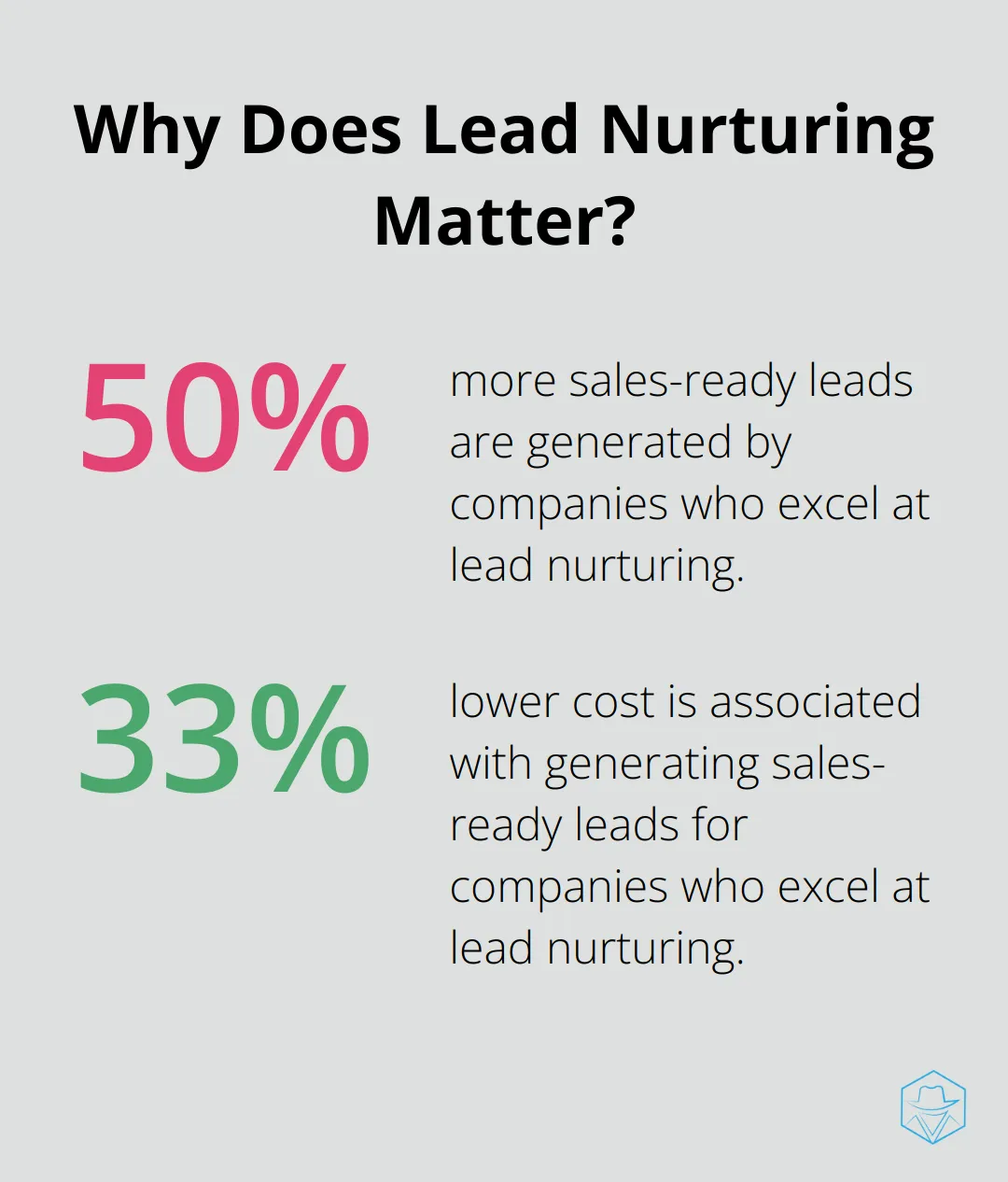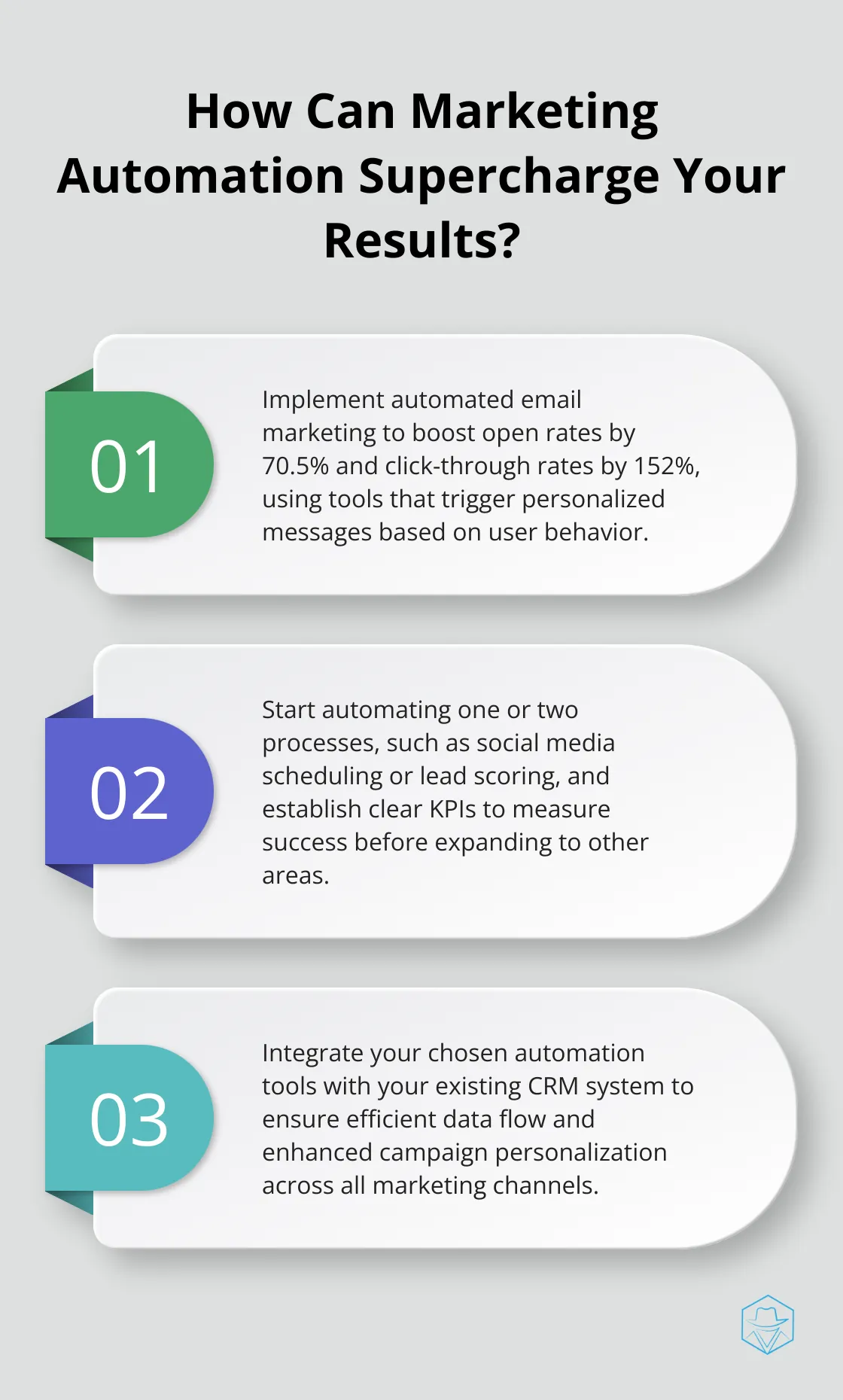Streamline Your Marketing with Workflow Automation

At Drop Cowboy, we’ve seen firsthand how marketing workflow automation can transform businesses. This powerful tool streamlines processes, saves time, and boosts efficiency across marketing departments.
In this post, we’ll explore the key features of marketing workflow automation and how to implement it effectively. Get ready to revolutionize your marketing strategy and achieve better results with less effort.
What Is Marketing Workflow Automation?
Defining the Game-Changer
Marketing workflow automation revolutionizes how businesses streamline their processes and boost efficiency. It uses software to automate repetitive marketing tasks, allowing teams to focus on strategy and creativity. This powerful tool transforms marketing departments, saving time and enhancing results across the board.
Automation for All Business Sizes
Contrary to popular belief, marketing automation isn’t exclusive to large corporations. Small businesses and startups can reap enormous benefits from these tools. A study by Nucleus Research highlights the impact: marketing automation drives a 14.5% increase in sales productivity and a 12.2% reduction in marketing overhead. These figures represent a significant boost for companies of any size.
Transforming Core Marketing Processes
The impact of automation on marketing efforts is profound. Email marketing serves as a prime example. Instead of manually sending emails to each lead, automation tools trigger personalized messages based on user behavior. This personalization yields impressive results – Epsilon reports that automated emails generate 70.5% higher open rates and 152% higher click-through rates compared to traditional marketing messages.
Versatility Across Marketing Channels
Marketing workflow automation’s versatility extends across various aspects of marketing. From social media management to lead scoring, customer segmentation, and even content creation, automation enhances multiple processes. For instance, social media scheduling tools post content at optimal times across multiple platforms (ensuring your message reaches your audience when they’re most likely to engage).
Working Smarter, Not Just Faster
Marketing workflow automation transcends mere time-saving. It enhances the effectiveness of your marketing efforts, allowing you to work smarter, not just faster. In today’s fast-paced digital landscape, this approach proves key to staying ahead of the competition.

As we explore the power of marketing workflow automation, it’s essential to understand its key features and how they can benefit your business. Let’s examine the core components that make these tools so effective in the next section.
Key Features of Marketing Workflow Automation Tools
Marketing workflow automation tools have transformed how businesses approach their marketing strategies. These powerful platforms offer a range of features that streamline processes, enhance productivity, and drive better results. Let’s explore the essential components that make these tools indispensable for modern marketers.
Task Management and Assignment
Robust task management capabilities form the foundation of marketing workflow automation. These tools allow teams to create, assign, and track tasks with ease. HubSpot’s task management feature, for example, enables users to set due dates, prioritize tasks, and monitor progress in real-time. This level of organization ensures that teams meet deadlines consistently and nothing slips through the cracks.
Content Creation and Scheduling
Content creation and distribution play a critical role in any marketing strategy. Automation tools like Hootsuite and Buffer have revolutionized content scheduling. These platforms enable users to plan and schedule content across multiple social media channels weeks (or even months) in advance. This feature not only saves time but also maintains a consistent online presence, which proves crucial for brand visibility and engagement.
Lead Scoring and Nurturing
Automation excels in lead management. Tools such as Marketo and Pardot offer sophisticated lead scoring systems that automatically rank leads based on their behavior and engagement level. This feature allows sales teams to focus their efforts on the most promising prospects, which significantly improves conversion rates. A study by Forrester Research found that companies who excel at lead nurturing generate 50% more sales-ready leads at 33% lower cost.
Analytics and Reporting
Data-driven decision-making stands at the heart of successful marketing strategies. Marketing automation tools provide comprehensive analytics and reporting capabilities that offer invaluable insights into campaign performance. Google Analytics, when integrated with various automation platforms, allows marketers to track website traffic, user behavior, and conversion rates. These insights enable marketers to refine their strategies and allocate resources more effectively.
Personalization and Segmentation
Advanced automation tools offer powerful personalization and segmentation features. These capabilities allow marketers to tailor their messages to specific audience segments, increasing relevance and engagement. For instance, Drop Cowboy’s platform enables businesses to create highly personalized voicemail and SMS campaigns, which can significantly boost response rates.

As we move forward, we’ll explore how to implement these powerful tools successfully in your marketing strategy. The next section will guide you through the process of assessing your current marketing processes and selecting the right automation tools for your business needs.
How to Implement Marketing Workflow Automation
Assess Your Current Marketing Processes
The first step in implementing marketing workflow automation involves a thorough evaluation of your existing marketing workflows. Identify repetitive tasks, bottlenecks, and areas prone to human error. For example, if your team dedicates hours each week to manual follow-up emails, this task presents an excellent opportunity for automation. A McKinsey study reveals that 45% of paid work activities can be automated using current technologies. This assessment phase proves essential in determining where automation will yield the most significant impact.
Select the Right Automation Tools
The choice of appropriate tools plays a critical role in successful implementation. Consider your specific needs, budget, and team size when making your selection. Small businesses might find all-in-one platforms sufficient, while larger enterprises may require more specialized tools for each aspect of their marketing workflow.

Prioritize tools with robust integration capabilities when evaluating options. The ability to connect with your existing tech stack proves vital for seamless workflow automation. (For instance, some platforms integrate with various CRMs, allowing for efficient data flow and enhanced campaign personalization.)
Implement Gradually and Measure Results
Avoid the temptation to automate everything at once. Instead, start with one or two processes and expand gradually. This approach allows you to address any issues and demonstrate ROI to stakeholders. Begin with tasks that consume significant time but are relatively simple to automate.
Establish clear KPIs for each automated process. If you automate email marketing, track metrics such as open rates, click-through rates, and conversions. (A study by Epsilon found that automated emails generate 70.5% higher open rates compared to traditional marketing messages.) Use these benchmarks to measure the success of your automation efforts.
Train Your Team and Manage Change
The success of your automation initiative depends heavily on your team’s adoption. Invest in comprehensive training to ensure everyone understands how to use the new tools effectively. Create detailed documentation and standard operating procedures for each automated process.
Address any concerns about job security directly. Emphasize that automation frees up time for more strategic, creative work. A PwC survey indicates that 73% of respondents believe technology can never fully replace human intelligence, despite job security concerns.
Continuously Optimize Your Automated Workflows
Implementing marketing workflow automation requires an ongoing commitment. Review and optimize your automated workflows regularly. As your business grows and evolves, your automation strategy should adapt accordingly. With the right approach, you’ll observe significant improvements in efficiency, productivity, and ultimately, your bottom line.
Final Thoughts
Marketing workflow automation revolutionizes business strategies, enabling teams to focus on high-value tasks that drive growth. It increases productivity, improves lead nurturing, enhances personalization, and facilitates data-driven decision-making. The future of marketing workflow automation will incorporate more AI and machine learning, offering sophisticated personalization and predictive analytics.

We at Drop Cowboy understand the power of automation in marketing. Our platform offers innovative features like ringless voicemail and SMS integration, which help businesses automate their communication strategies. With tools such as Mimic AI™ for voice cloning and Smart Delivery™ for efficient global message delivery, we strive to provide cutting-edge marketing automation technology.
The future of marketing lies in automation. Businesses that embrace these powerful tools and strategies can stay ahead of the curve, deliver more personalized experiences to their customers, and achieve better results with less effort. Take the first step towards a more efficient, effective marketing strategy today.
blog-dropcowboy-com
Related posts

April 17, 2025
How to Choose the Best Apps for Your Shopify Store
Find Shopify best apps with our expert guide. Boost sales and improve user experience with top app recommendations tailored for your store.

March 18, 2025
Twilio Logs: How to Access and Analyze Them Effectively
Analyze Twilio logs efficiently with practical tips for access and interpretation to optimize your communication and improve operational insights.

April 14, 2025
Top Email Marketing Tools for Shopify Store Success
Discover the best email marketing Shopify tools to boost sales, engage customers, and enhance your store’s success seamlessly.

March 8, 2025
Integrating Ringless Voicemail API into Your System
Boost communication with our ringless voicemail API integration guide. Get practical tips and tools for seamless implementation and improved efficiency.

April 14, 2025
What is Triple Whale and How Can It Boost Your Business?
Learn what Triple Whale is and how it boosts business growth with data analytics and insights, driving sales and increasing efficiency.

March 21, 2025
How to Boost E-commerce Sales with SMS Marketing
Boost e-commerce sales effortlessly with SMS ecommerce strategies. Discover practical tips and proven methods to engage customers and increase revenue.